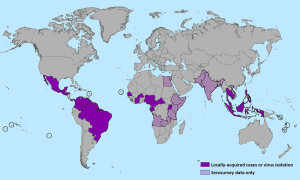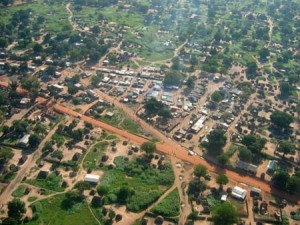The mosquito-borne Zika virus is projected to infect up to 4 million people across the Americas in the next year.
Last May, public health authorities confirmed a re-outbreak of the virus in Northeast Brazil. Since October 2015, the virus has spread to other surrounding areas, including southern United States, according to Pan American Health Organization (PAHO).
 The World Health Organization (WHO) declared the virus outbreak as a “public health emergency of international concern.” Margaret Chan, director of WHO forwarded a statement to Al Jazeera on the matter—”Last year, the virus was detected in the Americas, where it is now spreading explosively. As of today, cases have been reported in 23 countries and territories in the region.”
The World Health Organization (WHO) declared the virus outbreak as a “public health emergency of international concern.” Margaret Chan, director of WHO forwarded a statement to Al Jazeera on the matter—”Last year, the virus was detected in the Americas, where it is now spreading explosively. As of today, cases have been reported in 23 countries and territories in the region.”
Though there are strong suspicions behind the causal relationship between the virus and birth defects, Chan states that the claim cannot be confirmed yet.
The first outbreak was detected in Uganda in 1947. Fifteen miles outside the country’s capital Kampala lies the Zika forest where the first case was discovered. However, unlike the cases in the Americas, most of the local cases in Africa were mild, only resulting in a “rash, fever, and red eyes” for a few days. Julius Lutwama, top scientist for Uganda Virus Research Institute (UVRI), believes there is an alteration of the virus from the one he discovered in Uganda to that of South America. “What has happened in South America is that it has changed a little bit… and through these changes it has become more aggressive towards humans,” Lutwama said. “This small change has resulted in it posing deep problems in the human population.”
Since there is no treatment or vaccine for the virus yet, countries are focusing their efforts on preventative measures first. In the case of El Salvador, Eduardo Espinoza, Vice Minister of Health, released a recommendation to the Salvadorans to “plan their pregnancies and try to avoid getting pregnant this year and the next.”
WHO, on the other hand, is planning on taking another route of preventative medicine by helping women reduce their risk of mosquito bites. They will implement this by providing more accessible mosquito nets and repellent.
The debate over whether women should abstain from getting pregnant has also brought up the heated discussion around abortion rights. People in this defense are equating the virus to that of a similar case in the 1960’s with the Rubella disease. Like Zika, Rubella had links to birth defects and abnormalities with pregnancies. However, because this was a decade shy of Roe v. Wade, the public debate did not go on for long. But as a result of the widespread discussion, more Americans “came to empathize with those mothers who has an illicit abortion” says Jasmine Garsd of National Public Broadcasting (NPR).
In the case of El Salvador, Espinoza plans to reduce pregnancies through natural ways, such as abstinence and condoms. But unlike the U.S., El Salvador does not have abortion-rights laws. Salvadoran abortion rights activist, Angela Rivas, see the situation differently. She claims that Zika will lead to “more clandestine abortions and a higher number of women being sent to jail.”
An emergency meeting will be held by WHO on Monday to discuss possible ways to battle the Zika virus. Until then, preventative measures have been taken to reduce risk of contracting the virus.


